An Australian man who came across the most venomous fish in the world last weekend fortunately lived the tell the tale.
Daniel Brown was walking around the rock pools at Lee Point beach north of Darwin when he almost stepped on a deadly stonefish.
Mr Brown posted on Facebook that he and a friend ‘went exploring the Lee Point rock pools at low tide on Sunday.
‘We were looking for the most venomous octopus in the world – the blue-ringed octopus.’
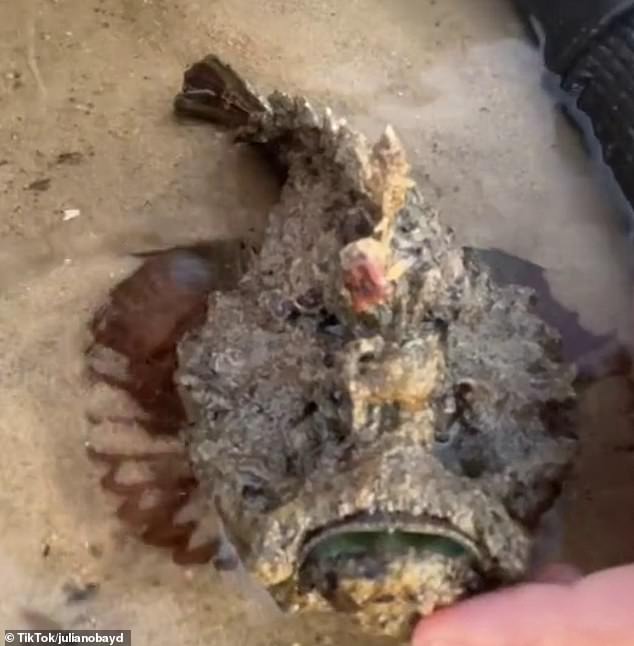
Stonefish (pictured) are the most venomous fish in the world and its sting can kill in an hour
They didn’t find the octopus, but ‘Instead we found the most venomous fish in the world! A stonefish,’ he said.
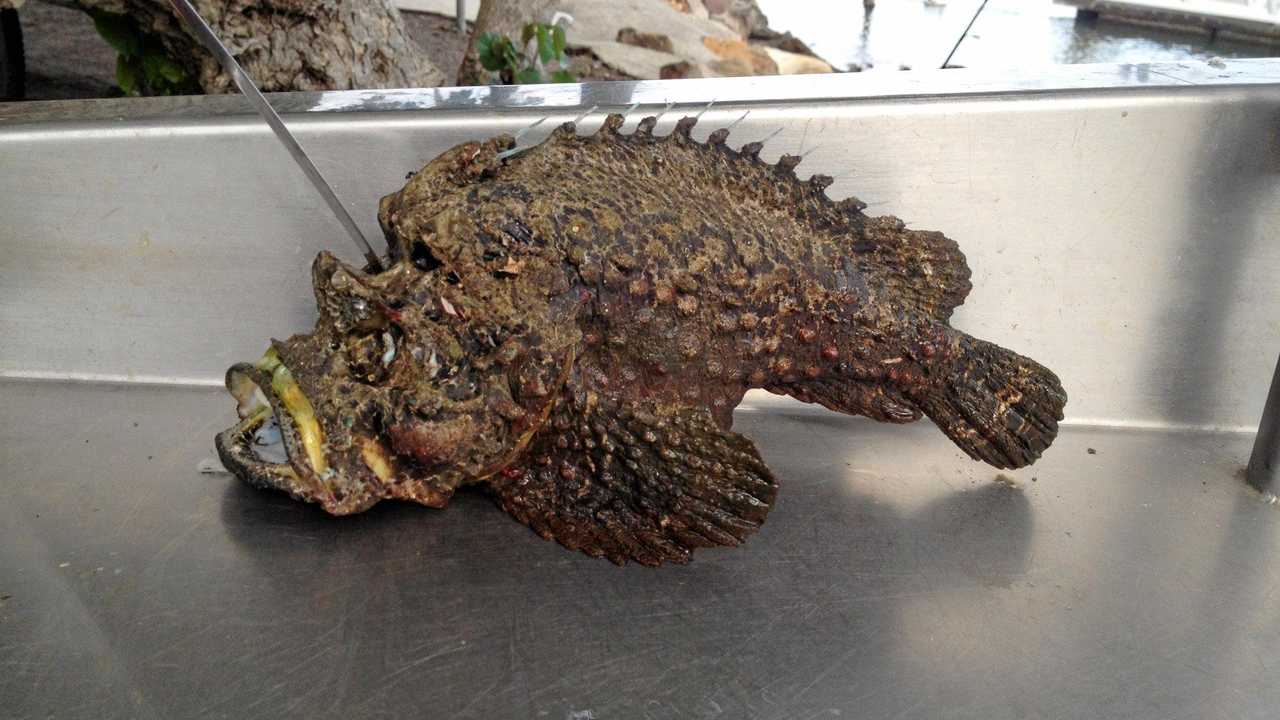
For those who don’t know what a stonefish is, Mr Brown explained that they ‘can inject a powerful toxin through their dorsal spines when stepped on.
‘This toxin can be fatal to humans if left untreated, but no deaths have been recorded in Australia.’
He said the photo he posted ‘is exactly how we found it too. Out of the water, on top of the sand, not buried in it.
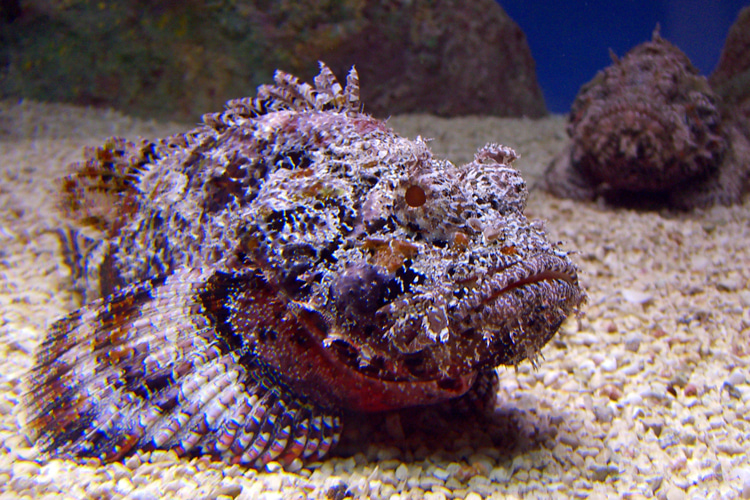
‘When we realised it wasn’t dead we moved it – a delicate operation involving thongs so as not to touch it with our hands – into the water where it slowly started burying itself,’ said Mr Brown.
He finished his post with the very sensible advice to ‘be careful where you step out there on the beach guys.
‘Not all the rocks are actually rocks.’
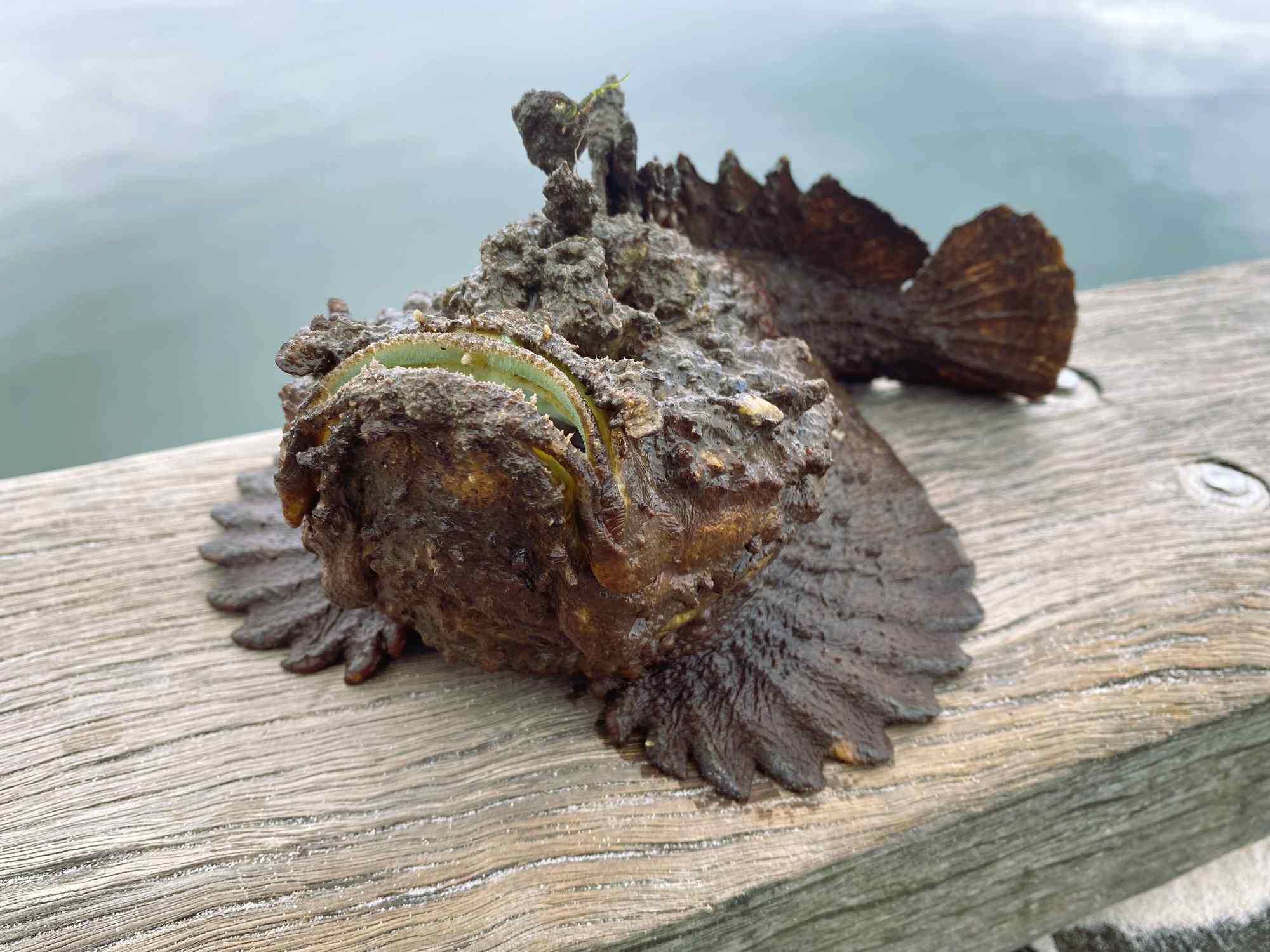
Queensland Health has also warned about the dangers of stonefish.
It advised that ‘to prevent a stonefish sting, wear sturdy footwear on reef flats, or while wading on soft-bottom substrates adjacent to rocky or weedy areas’.
The warning added that if you are stung by a stonefish, to ‘call Triple Zero (000) immediately as antivenom may need to be administered’.
A stonefish is capable of killing an adult in less than an hour.
Even if its sting doesn’t prove fatal, it’s regarded as one of the most painful experiences you can endure.

Adam Clancy (pictured) made a video after he stepped on the stonefish where he was remarkably laid back
Last July, a man who survived stepping on a stonefish and brushed off the pain with alcohol was stunned to squeeze one of the deadly creature’s long barbs out of his foot months later.
Adam Clancy, 31, gained international media coverage after posting video of himself nonchalantly talking about how he stepped on a stonefish and was treating the pain with wine and whisky.

The professional photographer from the NSW town of Tenterfield was wading off Queensland’s Moreton Island on the night of April 22 with camera in hand when he trod on the well-disguised stonefish.
‘My mate confirmed it was a stonefish and told me to go ashore as I’m about to be in a lot of pain,’ Mr Clancy told Daily Mail Australia.
‘I went inside and another friend got a bucket of hot water for my foot, then I waited for the paramedic.’
‘He arrived and monitored my vital signs, which is when he told me I was ridiculously relaxed about it, despite the pain being a high eight out of 10.’
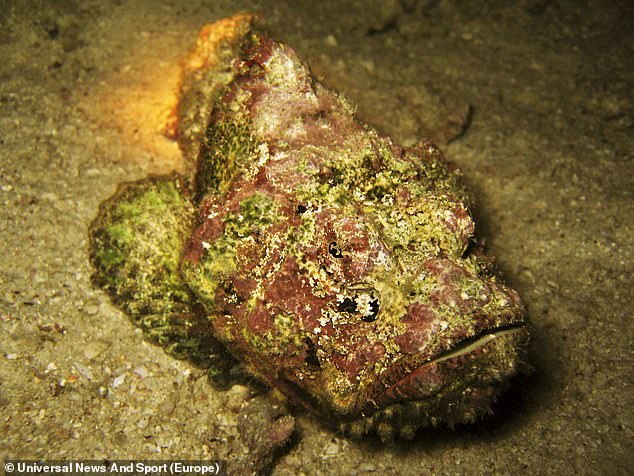
Stonefish venom can induce heart failure and those injected are advised to get anti-venom treatment as soon as possible
The paramedic offered painkillers to Mr Clancy but he refused them, a decision he laughs about in hindsight.
‘Yeah, (painkillers) probably would’ve been the better option but two glasses of whisky and a bottle of Shiraz helped me sleep that night,’ he said.
The paramedic also suggested Mr Clancy go to a mainland hospital the next day but instead he stayed on the island and went back to work the next day.
Mr Clancy posted a TikTok video where in a deadpan manner, with a glass of red wine in hand, he confides he has just stepped on the ‘world’s most venomous fish’.
‘So, the paramedic just told me that most people go into shock and pass out from the intense pain,’ he says.
‘So, apparently I’m the most chilled-out guy in agonising pain ever.’
How dangerous are stonefish? The Queensland Museum explains…
Stonefish are the most venomous of all fishes. They are found throughout shallow coastal waters of the northern half of Australia. The fish usually lies motionless, often partially buried in the substrate and perfectly camouflaged among surrounding coral, rocky reef, rubble, or aquatic plants.
The stonefish has 13 sharp strong dorsal fin spines that are contained within a sheath of thick skin. At the base of each spine there are two venom glands that discharge their contents along ducts in the spine. When disturbed, the fish erects its spines, but maintains its position on the sea floor.
Stings usually occur to the feet of swimmers or waders who have ventured away from clean sandy substrate and closer to the more complex bottom structure preferred by the stonefish. Multiple spines can often penetrate affected limbs, resulting in more extensive envenomation. The pain is immediate, excruciating and may last for many days. Muscular paralysis, breathing difficulties, shock and sometimes heart failure and death can ensue.
To prevent stonefish stings, sturdy footwear should be worn on reef flats, or while wading on soft-bottom substrates adjacent to rocky or weedy areas. An antivenom for stonefish stings has been developed. In the event of a sting, the victim should leave the water, apply first aid and seek medical attention as soon as possible.